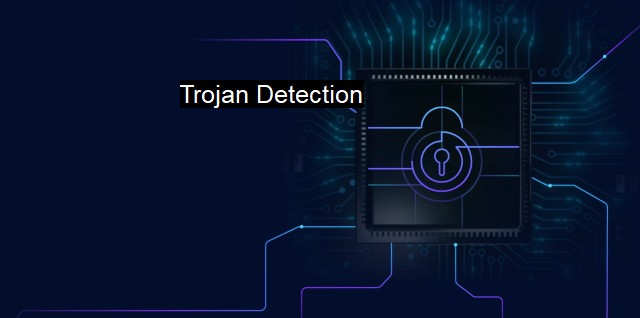What is Trojan Detection?
Importance of Trojan Detection in Cybersecurity: Strategies and Methods to Protect Computer Systems and Avoid Data Breaches.
Trojan detection refers to a critical process within the field of cybersecurity and antivirus that involves recognizing and neutralizing the threat posed by Trojan horses, better known as "Trojans," to computers and other digital devices.While the name "Trojan horse" may have roots in an ancient Greek tale, implying a seemingly harmless item carrying dangerous content, this couldn't be more fitting in the digital world. A Trojan is a type of malicious software (malware) that deceives users into loading and executing it on their systems. Designed to look like a legitimate software program or file, these applications persuade users to install them–unbeknownst that they are malicious. Once active on a system, they can carry out an array of harmful operations.
Often, these operations remain hidden from users, as Trojans function invisible in the background, with operations ranging from espionage to sabotage. They may disrupt the performance of computers or networks, collect sensitive data, create a backdoor access for cybercriminals, or, in some cases, even allow hackers full control over the infected device.
Detecting these threats requires keen vigilance, advanced technology, and specialist knowledge about malware behavior, hence the necessity of Trojan detection in cybersecurity and antivirus applications. Trojan detection strategies can follow a multitude of approaches but fundamentally consist of recognizing the unique characteristics, behaviors, and signatures associated with these types of malware.
There are two primary methods for detecting Trojan horses— signature-based detection and heuristic-based detection.
Signature-based detection involves scanning files to seek out known Trojans. It uses a database loaded with the signatures, or unique defining code, that make up each known Trojan. Comparison of these signatures with the ones present in the system determines whether a Trojan is active or not. this method can only identify Trojans that have known signatures present in the antivirus database.
In contrast, heuristic-based detection can identify not only known Trojans but also unidentified ones. Instead of looking for exact matches with known malicious code, heuristic-based detection seeks out suspicious behaviors or attributes indicative of malware. This detection type looks at elements like the code structure, code commands, and numerous other factors to determine a likelihood of malicious activity. Heuristic detection can thus identify potential Trojans even before a specific signature for them becomes available.
With the sophistication of Trojans continually increasing, antivirus systems and cybersecurity professionals must adapt and improve their detection capabilities regularly. Up-to-date firewalls and using an all-rounded antivirus program form just a small part of the multi-layered defense strategy needed for Trojan detection. Good cybersecurity habits are equally as important, such as verifying the sources of file downloads to reduce exposure.
Trojan detection is not solely about recognizing potential threats; it also extends into combating and eliminating these threats. Steps for this include quarantining the Trojan, cleaning the infected files, eliminating the changes made to the system, and reinstalling software, if necessary. Cybersecurity best practice involves continual monitoring and analysis, even after a potential threat has been handled, to further refine and update prevention and detection mechanisms.
Trojan detection while sometimes posed as a technical, continuous challenge, is vital. It not only ensures the smooth operation of digital systems but also serves to safeguard privacy, critical data, financial assets, and in some cases, even national security. Thus, it is imperative for everyone, from corporations and individuals alike, to understand, execute, and prioritize Trojan detection.

Trojan Detection FAQs
What is Trojan Detection?
Trojan detection refers to the process of identifying and detecting Trojan horse malware on a computer or network. The goal is to detect and remove the Trojan before it can cause harm or compromise sensitive data.How does antivirus software detect Trojans?
Antivirus software uses a variety of methods to detect Trojans, including signature-based detection, behavioral analysis, and heuristics. Signature-based detection compares the file or code against a database of known Trojan signatures. Behavioral analysis looks for anomalous behavior that may indicate a Trojan infection, while heuristics uses artificial intelligence and machine learning algorithms to identify new and unknown variants of Trojans.What are some common signs of a Trojan infection?
Some common signs of a Trojan infection include slow computer performance, pop-up ads, unauthorized access to files or programs, and changes to system settings. Trojans may also install additional malware or create backdoors for remote access by hackers.How can I prevent Trojan infections?
You can prevent Trojan infections by keeping your antivirus software and operating system up-to-date, avoiding suspicious emails and attachments, and being cautious when downloading and installing software from the internet. It's also important to use strong passwords and enable two-factor authentication on all accounts to prevent unauthorized access.| | A | | | B | | | C | | | D | | | E | | | F | | | G | | | H | | | I | | | J | | | K | | | L | | | M | |
| | N | | | O | | | P | | | Q | | | R | | | S | | | T | | | U | | | V | | | W | | | X | | | Y | | | Z | |
| | 1 | | | 2 | | | 3 | | | 4 | | | 7 | | | 8 | | |||||||